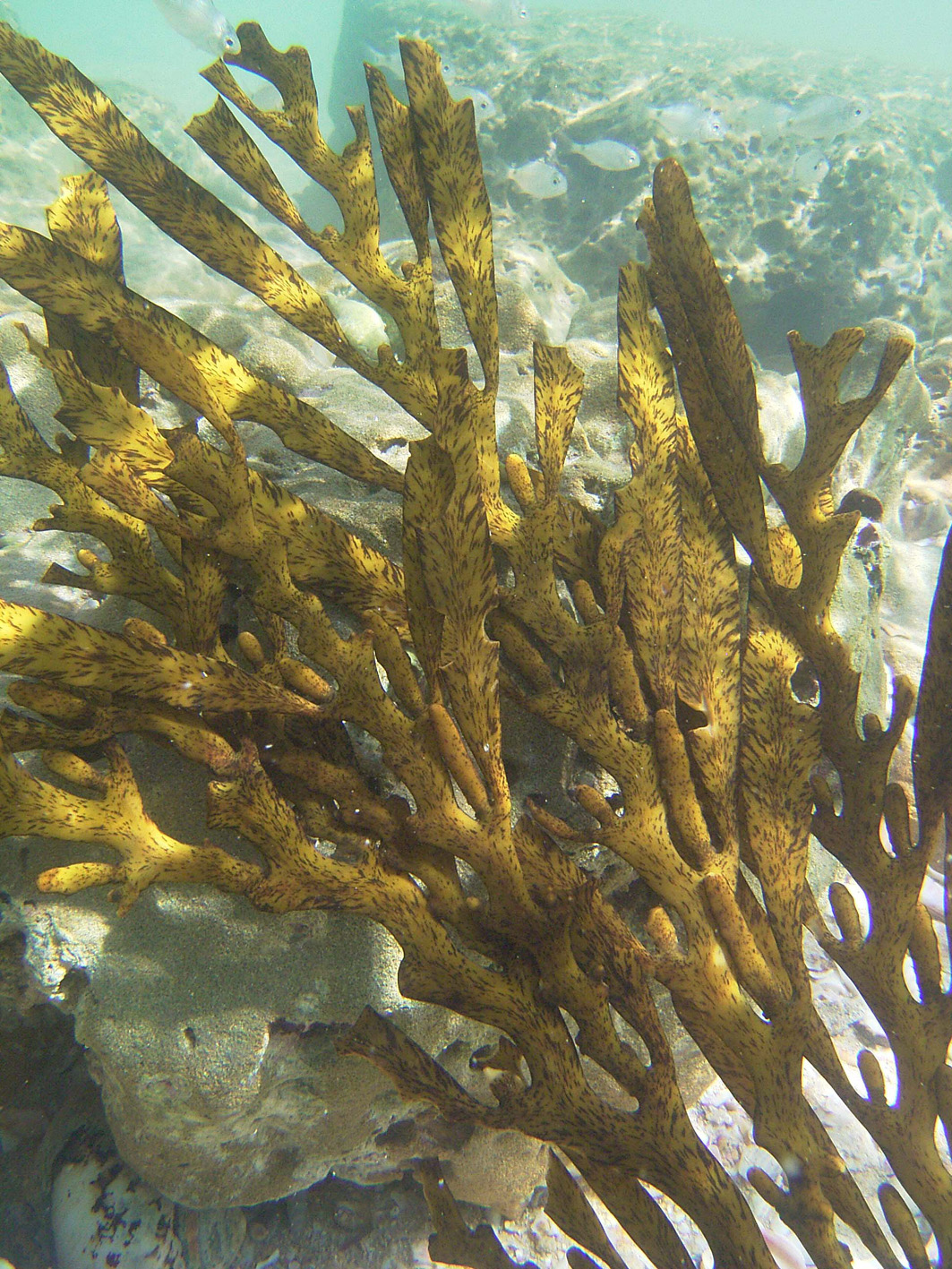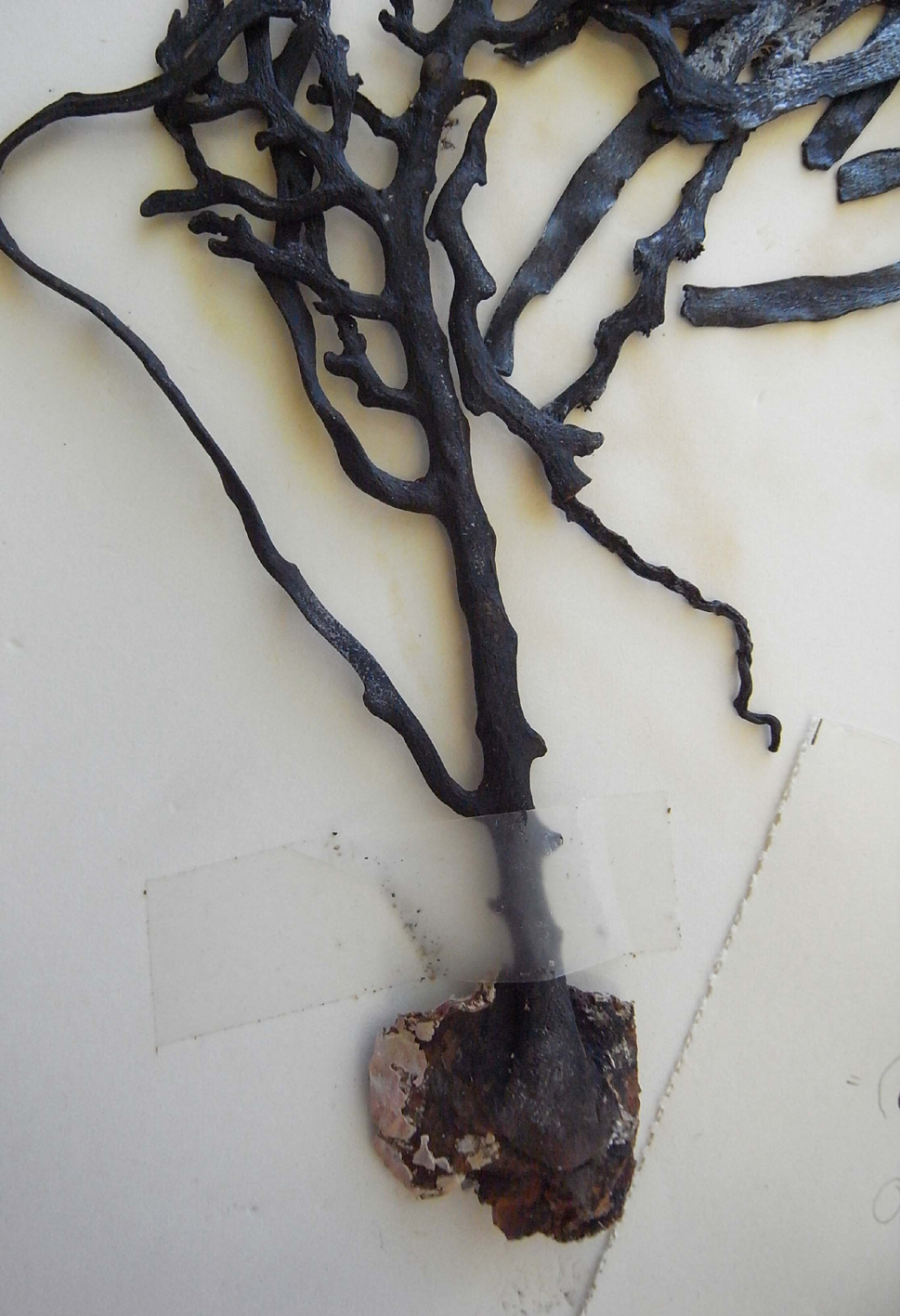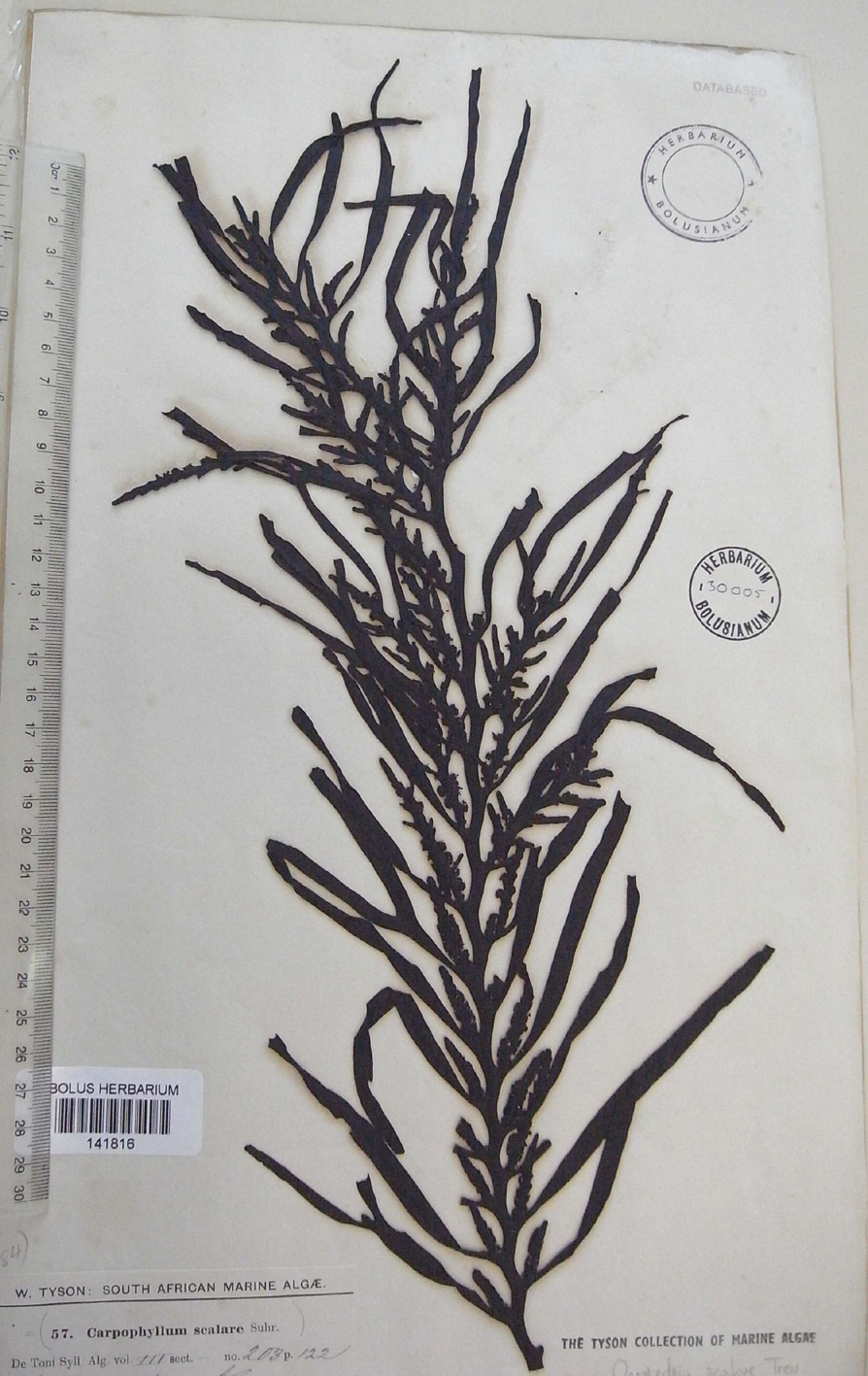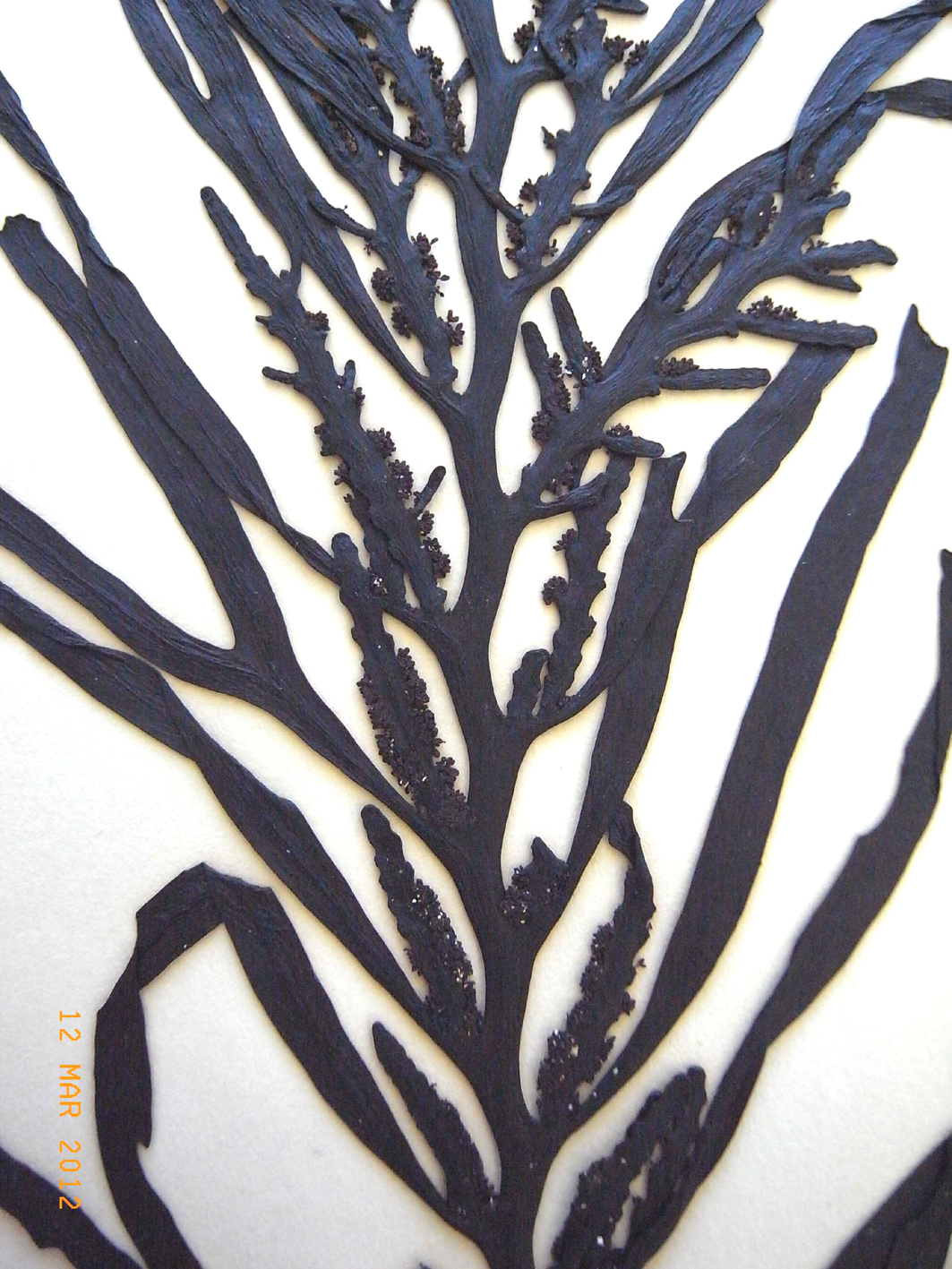Seaweeds of the South African South Coast


Order Fucales
Family Sargassaceae
Oerstedtia scalaris (Suhr) Jensen 1974: 34, figs 15-20, pls. 5, 6, 13b
Plants dark brown to yellowish-brown, with tough rather rubbery texture, up to 70 cm tall, comprising a prominent, woody, conical holdfast bearing one or more main axes that in turn bear primary lateral branches with distichous, alternating arrangement of leaves (rarely, second order of lateral branches present). Main axis up to about 15 cm long, terete at base, becoming slightly compressed, perennial, giving rise to alternating, distichously-arranged primary laterals; primary laterals slightly compressed at base becoming strongly compressed distally, up to 30 cm long or longer, 2-4 mm wide, zig-zag in shape, bearing leaves in bilateral alternate arrangement. Leaves on subterete stalks, linear, smooth-margined, 5-15 cm long x 0.6-0.8 cm wide, faint “midrib” sometimes visible ; apical cell 3 –sided, borne in slit-like pit at leaf apex.. Fertile branchlets borne in axils of leaves, up to 3 cm long, somewhat zig-zag in shape, bearing alternately arranged ultimate order of receptacular branchlets. Receptacular branchlets terete, 1-2 mm long, containing conceptacles spirally arranged in swollen distal portion. Male conceptacles most distal, each containing numerous antheridial filaments. Female conceptacles below males. Each containing a few large (ca. 50 µm diameter) unilocular sporangia around a central tuft of paraphyses.
Collections,ecology and regional distribution
Recorded from just west of Cape Agulhas to near Durban (22-51) in the shallow subtidal zone. It is not uncommon from Port Alfred to southern Kwazulu-Natal, but we have never seen it in the Agulhas Area.
World distribution: South African endemic.
Type locality: Cape of Good Hope, South Africa (Silva et al. 1996).
Note: the perennating main axes are always shorter that the primary laterals, and often herbarium specimens consist only of one primary lateral, sometimes with a piece of the main axis attached to the base.

Oerstedtia scalaris, Port Alfred.

Oerstedtia scalaris, herbarium specimen to show holdfast.

Oerstedtia scalaris, herbarium specimen - one primary lateral showing leaves, fertile branches in axils.

Oerstedtia scalaris, detail of fertile branchlets in leaf axils (herbarium specimen).
References Oerstedtia scalaris
Jensen, A. (1974). Morphological studies in Cystoseiraceae and Sargassaceae (Phaeophyceae) with special reference to apical organization. University of California Publications in Botany 68: 1-61.
Silva, P.C., Basson, P.W. & Moe, R.L. (1996). Catalogue of the benthic marine algae of the Indian Ocean. University of California Publications in Botany 79: 1-1259.
Cite this record as:
Anderson RJ, Stegenga H, Bolton JJ. 2016. Seaweeds of the South African South Coast.
World Wide Web electronic publication, University of Cape Town, http://southafrseaweeds.uct.ac.za; Accessed on 07 December 2025.